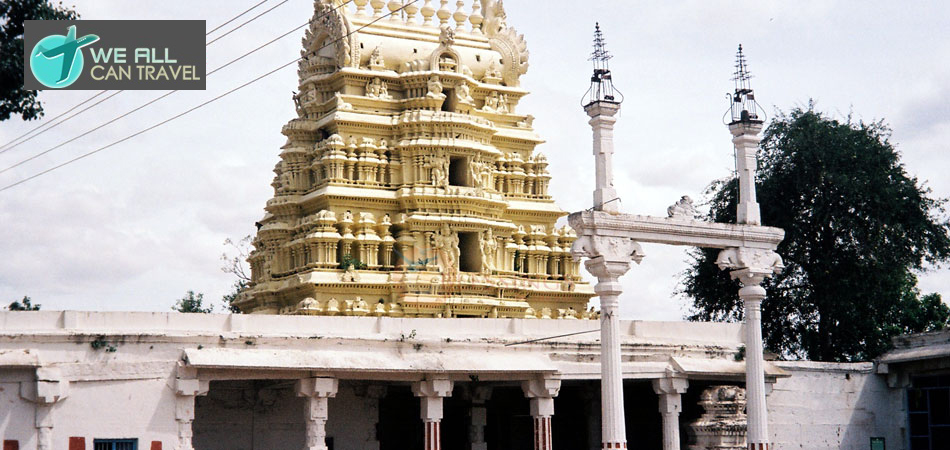Legend Of Chottanikkara Devi Temple
According to the sthala purana the place where the Chottanikkara Devi Temple stands today was once a dense forest inhabited by tribals. Among them was a notorious dacoit by name Kannappan. He struck terror among people by his ruthless acts. One day he brought home a cow intent on slaughtering it for food. To his utter consternation it tore itself free and escaped into the jungle. He tried to trace it but failed.
He returned home disappointed when lo! he saw the same cow being caressed by his fond daughter who would not allow him to kill it. Subsequently she herself, who was his only child, died. Wisdom and enlightenment dawned upon Kannappan. He lost interest in things mundane and turned his thoughts towards good.
One day he had a dream in which Mata Sakti appeared before him and told him that the cow which brought about his transformation was Herself. She also informed him that the cowshed would be sanctified by the presence of Her idol and that of Vishnu. The next day Kannappan repaired the shed and found the idols. He built a temple and spent the rest of his life in the worship of the Devi. After the death of Kannappan the temple fell in ruins as the place became uninhabited. One day a Pulaya (outcaste) woman who had come to cut grass sharpened her scythe against a stone which started to ooze blood. The horror-stricken woman shrieked aloud and the Pulayas in the neighbourhood came running to the spot. They, in turn, informed the learned Edathu Nambudiri, who, visiting the spot, released that there was divine Chaitanya of Parasakti at the place. He bought malar and offered pooja. Some other Nambudiris gathered and a prasnam was held in which it was revealed that the stone be worshipped as Devi and the adjoining one as Vishnu and both together as Lakshmi Narayana.
The spot where the goddess appeared first is the present Pavizhamallithara on the south side of the temple. It was Edathu Nambudiri who built a shrine, performed pooja and administered the temple for several years. Later some trustees took over. The celebrated Kakkasseri Bhattatiri who defeated the equally celebrated Uddanda Sastri in a wordy duel was one of the trustees. They appointed one Ayinakad Nambudiri of Kurumbranad in North Malabar as Manager. But he became so much engrossed in his devotion to the Bhagawati that he forgot even to maintain the accounts regularly. During the mandalam (November-December) when the trustees assembled to perform the customary Eswara seva, they, as usual, asked the manager to produce the accounts which he could not. They were naturally enraged and were contemplating action against the defaulter.
But the Devi came to the rescue of the embarrassed Ayinakad. An unknown voice was heard : I am satisfied with the devotion of Ayinakad more than his accounts. From this date Ayinakad himself became a trustee. In course of time, he however became old and ill and eventually the Cochin Government took over the management of the temple in 1064 according to Malayalam era (A.D. 1888). The rulers of Cochin were great devotees of the Bhagawati. They brought about several improvements. The nalambalam, srikoil, mandapam etc. were renovated and their roof covered with copper plates. The golden flagstaff was also installed by them besides building anapandal, bhajana pura (shad for bhajan) etc.
 >> Agasteeshwara Temple
>> Agasteeshwara Temple >> Anantha Padmanabhaswami Temple
>> Anantha Padmanabhaswami Temple >> Ananthasana Temple
>> Ananthasana Temple >> Annapoorneshwari Temple
>> Annapoorneshwari Temple >> Arunachaleshwar Temple
>> Arunachaleshwar Temple